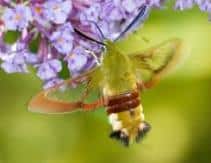 The idea of coevolution is used in the field of biology to refer to the mutual adaptation of two or more species of living organisms in the context of their evolutionary processes. This adaptation arises from the reciprocal influence that species exert on each other through parasitism, symbiosis, the predator-prey bond and other interactions.
The idea of coevolution is used in the field of biology to refer to the mutual adaptation of two or more species of living organisms in the context of their evolutionary processes. This adaptation arises from the reciprocal influence that species exert on each other through parasitism, symbiosis, the predator-prey bond and other interactions.
Coevolution means that the modifications that occur in a species as part of its evolution cause pressure on the natural selection of other species. Simultaneously, these species begin their adaptation to these changes and influence the evolution of the first species. In these cases we speak of interspecific coevolution .
There are biologists who also postulate the existence of intraspecific coevolution , which refers to the reciprocal changes that occur in organisms that belong to the same species. These modifications are recorded in devices and systems within the evolutionary framework of the species in question.
A concept related to coevolution is mutualism , a type of relationship in which several species evolve until they achieve mutual benefit .
It is important to note that coevolution is linked to biotic factors , and not abiotic factors . The influence of climate on the evolutionary process, for example, is not considered as a co-evolution between a living species and climatic conditions.
We can find cases of coevolution between different plants and insects . There are plants that generate toxins to avoid insect attacks; However, some animal species manage to overcome this defensive mechanism, achieving through their evolution that the toxins do not affect them. The plant, in this way, begins to produce other types of toxins.
Depending on the author who studies coevolution, it is possible to identify different types, with the theory of John N. Thompson , professor at the University of Illinois in the Department of Ecology and Evolutionary Biology, being one of the most widely accepted. The first type that is usually described is so-called gene-by-gene coevolution; Very specific cases are recorded here, which are characterized by mutual selection by the genes, which establish the relationships that the two species involved will have.
 The second type is known as specific coevolution , and it is one in which species possess a special trait that has arisen as a result of adaptation to enable life with other species. This is achieved through the combination of reciprocal traits of species that live in the same place, without any evidence from a genetic point of view to justify the traits.
The second type is known as specific coevolution , and it is one in which species possess a special trait that has arisen as a result of adaptation to enable life with other species. This is achieved through the combination of reciprocal traits of species that live in the same place, without any evidence from a genetic point of view to justify the traits.
In guild coevolution , on the other hand, a certain number of species function as a guild: its members relate to a group of another species, and this leads to the emergence of many traits in both parties, again as a result of adaptation . that they pass through.
There is a fourth type of coevolution, called diversifying , whose interactions are very specific and cause speciation to occur (a process thanks to which one species can give rise to others) and reproductive isolation. Diversifying coevolution can generate high numbers of species that interact with each other.
Finally, there is the type of coevolution known as escape and radiation , mentioned by scientists Raven and Ehrlich in 1964. It establishes that a plant is saved from being consumed by certain herbivorous animals if they manage to mutate in such a way that they can defend themselves. chemically. This mutation is followed by the evolution of the animal, which must adapt and withstand this defense to continue feeding. This causes a radiation of species that affects both parties.
